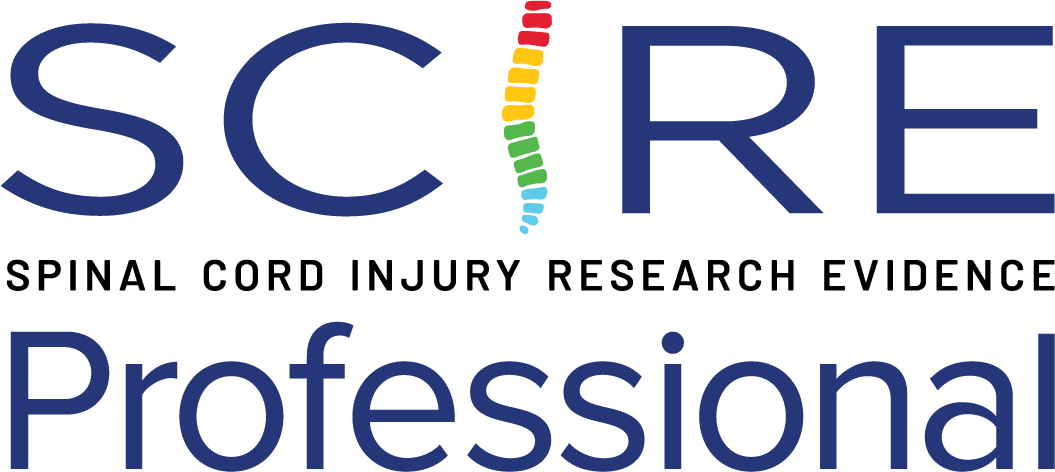Measurement Property Summary
Number of studies reporting psychometric properties: 6
Interpretability
- Higher scores indicate a higher level of independence
- Scores reflect the nursing burden and social acceptability of the activity.
- Cut scores have been established for the stroke population and are not necessarily representative for the SCI population. Scores of 0-20 indicate total dependence; 21-60: severe dependence; 61-90: moderate dependence and 91-99: slight dependence.
- Published data for the SCI population is available for comparison (see the Interpretability section of the Research Summary sheet).
- MCID: not established for the SCI population, but for a stroke sample (n = 43; mean (SD) age = 55.4 (14.6) yrs; Taiwanese adults post-stroke mean (SD) of 7.04 (64.1) days): BI MCID = 1.85 points
(Hsieh et al. 2007: “Establishing the minimal clinically important difference of the Barthel Index in stroke patients” Neurorehabil Neural Repair 21(3): 233-238)
- SEM: not established for the SCI population, but for a stroke sample (n = 56, Taiwanese adults post-stroke mean of 1197.1 days): BI SEM=1.45 points
(Hsieh et al. 2007. “Establishing the minimal clinically important difference of the Barthel Index in stroke patients” Neurorehabil Neural Repair 21(3): 233-238)
- MDC: not established for the SCI population, but for a stroke sample (n=56, Taiwanese adults post-stroke mean of 1197.1 days): BI MDC = 4.02 points
(Hsieh et al. 2007. “Establishing the minimal clinically important difference of the Barthel Index in stroke patients” Neurorehabil Neural Repair 21(3): 233-238)
Reliability
Number of studies reporting reliability data: 1
Barthel Index
Not established in the SCI population
Modified Barthel Index – High
- High interval consistency: α = 0.91
- High test-retest reliability: ICC = 0.99
(Ferfeli et al. 2023; n=100; n=50 with SCI; 41 males, 9 females; ASIA A-D; MBI Greek version)
Validity
Number of studies reporting validity data: 5
Barthel Index – Low to High
- High correlation with WISCI: r = 0.67
- High correlation with Rivermead Mobility Index (RMI): r = 0.6
(Morganti et al. 2005, n=284; 184 males, 100 females; traumatic or non-traumatic SCI)
- Moderate correlation with the Care Dependency Scale: r = 0.76
(Plantinga et al. 2006, n=154; 72 males, 82 females; n=17 with SCI; mean 54 years (males), 61 years (females))
- Low correlation between Discharge Barthel Index and operation intervention, rehabilitation intervention time, and average length of hospital stay: (p > 0.05)
(Zhang et al. 2015, N=95 (77M, 18F); Average age (SD): 36.76 (14.65); 50.49% CSCI, 24.22% TSCI, 25.29% LSCI)
Modified Barthel Index – High
- High correlation with the Katz Index score: r = 0.87
- High correlation with the SF-36 physical functioning subscale: r = 0.57
(Ferfeli et al. 2023; n=100; n=50 with SCI; 41 males, 9 females; ASIA A-D; MBI Greek version)
- High correlation with the SCIM-III: r = 0.95
(Cho et al. 2020; n=40; 32 males, 8 females; mean (SD) age: 47.32 (14.27) years; injury level: 15 paraplegia, 25 tetraplegia; ASIA A-D; new Korean version of the SCIM III)
Responsiveness
Barthel Index
Total score effect size (ES) for all participants = 0.98 (items: 0.38 to 1.16)
(O’Connor et al. 2004; n=237; 135 males; mean age: 52 years)
Modified Barthel Index
No values were reported for the responsiveness of the Modified Barthel Index for the SCI population.
Floor/Ceiling Effect
Barthel Index
Ceiling effects were detected at discharge for the Barthel Index score (24.1% of subjects had the highest score).
(O’Connor et al. 2004; n=237; 135 males; mean age: 52 years)
Modified Barthel Index
No values were reported for the responsiveness of the Modified Barthel Index for the SCI population.
Reviewers
Dr. William Miller, Dr. Carlos L. Cano-Herrera
Date Last Updated
December 31, 2024
